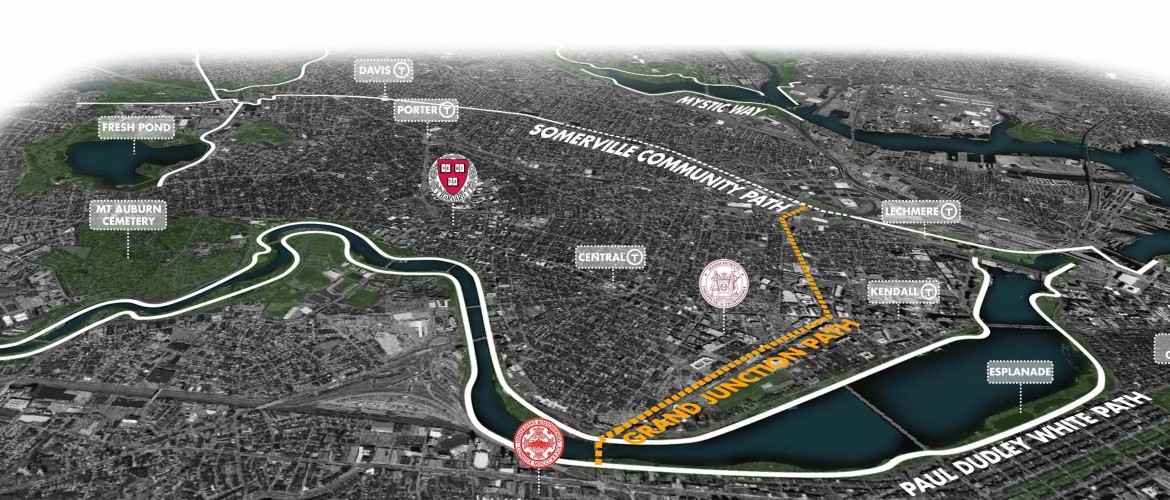
The ambitious Grand Junction Community Path project is one step closer to becoming a reality.
The mixed-use path would cut through an underutilized piece of Cambridge, running parallel to the Grand Junction Railroad from Allston through Kendall Square and up to the Green Line Extension Project. The five land parcels constituting the path are owned by different stakeholders, one of which is MIT, which recently released its feasibility study for its parcel of the project.
That MIT study, released in October, determined that the path is indeed able to be constructed, but it did raise several other questions that could impact how and when the path is built.
The analysis of the report was twofold: it outlined what MIT can do with its own parcel, and what can be done in the larger sense to connect the path to other transit hubs.
Per a memo dated December 2 from City Manager Richard Rossi to Brian Murphy, Assistant City Manager for Community Development, MIT had concerns about the following:
- What additional rail service can be accommodated along with a path? MassDOT’s 2014 Capital Investment Plan introduced the idea of using European-style Diesel Multiple Unit (DMU) trains on the Grand Junction corridor. This would provide urban rail service from a proposed new “West Station” at Beacon Yards near the Allston-Brighton I-90 interchange along the Grand Junction corridor to North Station, with a stop in Cambridge near Kendall Square. MassDOT has expressed interest in not precluding simultaneous 2-way rail service. Cambridge will continue to work with MassDOT as part of MassDOT’s Kendall Square transportation study which will look at use of the Grand Junction.
- A connection from the Grand Junction Path to the Somerville Community Path in Somerville has not been identified. As part of its 90% design phase comments to the Green Line Extension project, the City requested that the project again focus on answering this question.
- The report does not commit to creating any specific portions of the path, although this may be possible to do as planned MIT construction activities progress.
- Costs are also estimated to be significantly higher by MIT as compared to previous detailed cost estimates completed for the entire Grand Junction Path by the City in 2006.
As far as the MIT-centric portion of the path goes, some of it will coincide with the rail track that’s currently laid and still in use by MIT. It’s used to deliver equipment, hazardous materials and even haul trash by the higher-ed institution.
According to the Community Development Department, though, approximately one quarter of all Cambridge residents live within a quarter mile of the path. About 10 percent of MIT graduate students commute to campus from Somerville, and 75 percent of all MIT students live on or close to the school grounds.
Because of this dense population living in such close proximity to the path, the need to extend it closer to Somerville and the GLX and MIT’s continued use of the track, addressing these are imperative.
That’s why City Councilor Dennis Carlone is trying to get another public meeting on the books, sometime in early 2015, to talk with Cantabrigians about the study and what steps the City of Cambridge can take next to accommodate everyone’s needs.
But the memo already suggests several general steps the city can take in the meantime, including letting MIT break ground before any of the other stakeholders, because of the expedience in publishing their study.
Following close behind could be the Cambridge Redevelopment Authority, which has already designed a path between Main Street and Broadway in Cambridge. They could start construction in 2015 using $500,000 committed by MIT.
Stay tuned to BostInno for more information about upcoming hearings and developments.

